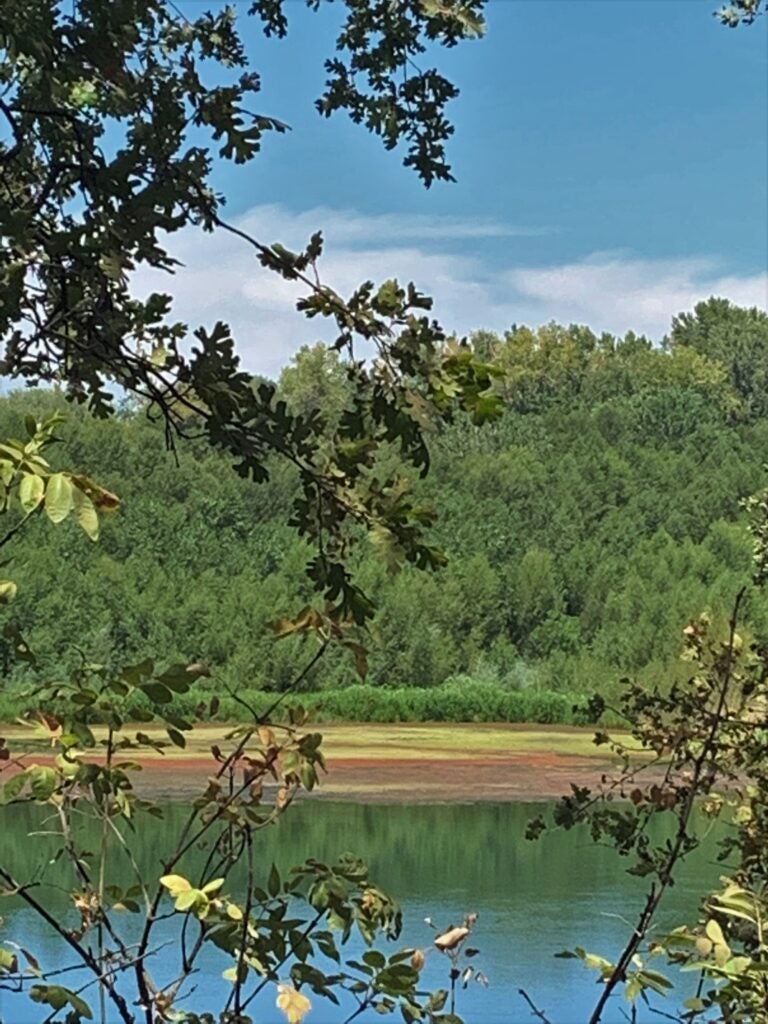We are dependent on water as a cornerstone of life, as well as cultural & recreational uses. The Enterprise Rancheria Estom Yumeka Maidu have historical ties along waterways within Feather & Yuba River, and it is an intrinsic part of who we are. We have a responsibility to protect and manage it.
What is a Freshwater Harmful Algae bloom (FHABs)? – A proliferation of microscopic and/or macroscopic algae or phytoplankton in water supported by nutrient and warm water temperatures, Low flows, stagnant water, increased intensity, and duration of sunlight, and sustained high temperatures create the ideal conditions for HABs. Current research suggests that the rising temperatures and changing precipitation patterns caused by climate change are a catalyst for their growth. There is no way to tell if an algal bloom is toxic just by looking at it.
What are the signs of Harmful Algal Blooms (HABs)? Small blue-green, green, white, or brown particles in the water, streaks in the water that look like spilled paint, mats, scum, or foam at the surface or along the shoreline & can have an odor described as gasoline, septic, or fishy.

If I or a family member were exposed, what symptoms should I look out for? Symptoms experienced during illness depend on the type of toxin present in the water and how a person is exposed (i.e., ingestion, skin contact, and inhalation). Common symptoms experienced include rash, blisters, cough, wheezing, congestion, sore throat, earache, eye irritation, diarrhea, vomiting, headache. Symptoms generally begin hours to 2 days after exposure to the toxins. There are potential Long Term Chronic Human Health Effects such as – Primary liver cancer, Kidney damage, neurodegenerative disease.
What if my pet is exposed? Dogs or other animals can become ill if they eat scum or mats in the water or on the shore, drink the water, or lick their fur after going into the water. Pets, especially dogs, are susceptible to HABs because they swallow more water while swimming and playing in the water. They are also less deterred by green, smelly water, that may contain HABs. Animals can experience symptoms within minutes of exposure to the toxins. These symptoms include vomiting, diarrhea, weakness, difficulty breathing, and seizures. In the worst cases, animals have died. If your pet experiences these symptoms after exposure, contact your veterinarian immediately.
Click the link below for a Factsheet on: California Freshwater & Estuarine Harmful Algal Blooms (HABs) PDF Factsheet:https://mywaterquality.ca.gov/habs/docs/hab_portal_faq_habs_factsheet_2020.pdf
Click this link if you need to report algae bloom you saw: California Freshwater & Estuarine Harmful Algal Bloom Report Form: https://mywaterquality.ca.gov/habs/do/bloomreport.html
Click this link lookup incidents on the California map that have already been reported. The HAB Incident Reports Map is maintained by the State Water Resources Control Board. This map and corresponding table only show locations where harmful algal blooms (HABs) have been voluntarily reported. https://mywaterquality.ca.gov/habs/where/freshwater_events.html
